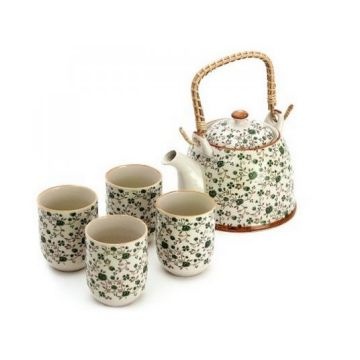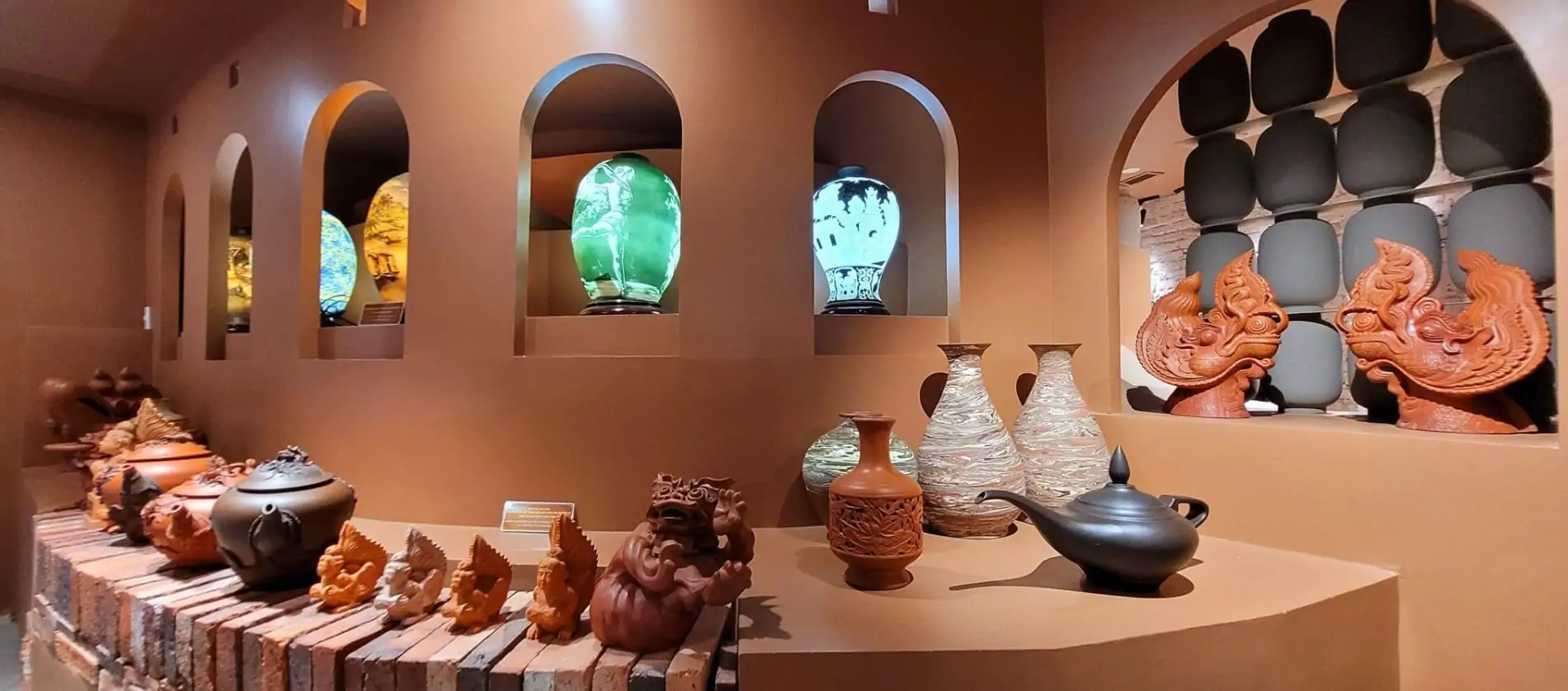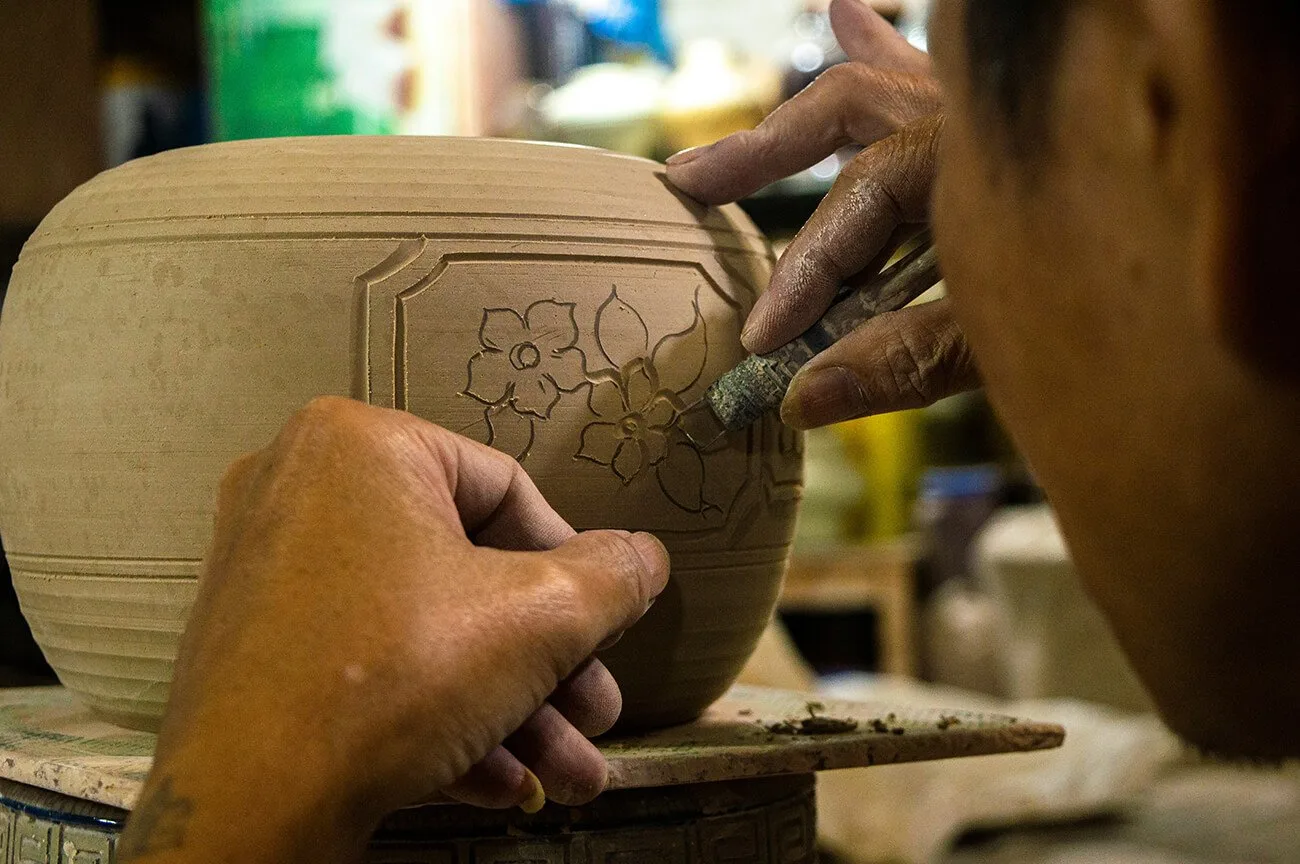News
Reveal the Glazing Techniques Used in Bat Trang Ceramics
Bat Trang ceramics, renowned for their exquisite craftsmanship and timeless beauty, have captivated art enthusiasts and collectors around the world. Rooted deeply in Vietnamese cultural heritage, these ceramics stand out not only for their intricate designs but also for the unique glazing techniques that lend them their distinct appearance and durability. This article delves into the fascinating glazing methods used in Bat Trang ceramics, exploring how artisans achieve such remarkable finishes, the materials they employ, and the evolution of glazing styles through centuries.
The Historical Background and Significance of Bat Trang Ceramics

Understanding the glazing techniques requires an appreciation of the rich history of Bat Trang ceramics. Originating from the Bat Trang village near Hanoi, Vietnam, this pottery tradition dates back over 700 years. Its long-standing reputation as a center for ceramic production is tied to both its geographic advantages and the skilled artisans who passed down knowledge through generations.
Before diving into specifics about glazing, it’s important to acknowledge how the history of Bat Trang ceramics shapes the techniques utilized today. The village has seen various influences—Ming Dynasty Chinese styles, local Vietnamese innovations, and modern adaptations—all contributing layers of complexity to its artistic output.
This historical framework helps explain why glazing in Bat Trang ceramics is not merely a technical process but a reflection of cultural identity, social values, and artistic expression.
Early Traditional Glazing Methods
In the early days, Bat Trang potters primarily used natural ash glazes derived from wood-fired kilns. These ash glazes were appreciated for their unpredictable yet beautiful effects, often leaving a textured, glossy finish with subtle color variations. Artisans had to master firing temperatures and glaze composition without modern instruments, relying on intuition and experience.
The traditional glazing was typically transparent or pale, allowing the underlying white clay body to shine through. This choice highlighted the delicate hand-painted motifs often applied before glazing. There was a focus on simplicity and purity aligned with Confucian aesthetics present in Vietnamese culture at the time.
Influence of Chinese and Other Foreign Techniques
During periods of trade and interaction, Bat Trang potters absorbed external influences, particularly from China’s Jingdezhen ceramics. These exchanges introduced new glaze recipes, including celadon, cobalt blue underglaze, and crackle glazes. Each foreign technique was adapted to fit local tastes and raw material availability.
For example, cobalt blue decoration became prominent in Bat Trang ceramics, inspiring vibrant blue-and-white porcelain pieces. These pieces are distinguished by a deep, lustrous glaze that protects the painted designs beneath while adding a luxurious sheen.
Modern Innovations in Bat Trang Glazing
In contemporary times, Bat Trang artisans blend traditional methods with modern technology. Electric kiln firing allows for precise temperature control, expanding the possibilities for glaze experimentation. New glaze colors and compositions have been developed, offering a wider palette that respects tradition yet meets current market demands.
Despite modernization, many craftsmen remain dedicated to maintaining the authenticity of Bat Trang ceramics, ensuring each piece reflects the village’s distinctive aesthetic and quality standards.
Materials and Composition: The Foundations of Glazing in Bat Trang Ceramics

Before exploring the artistic application of glazes, it is essential to understand the raw materials and chemical compositions that form the foundation of glazing in Bat Trang ceramics. The nature of the clay, glaze ingredients, and firing atmosphere all influence the final outcome.
Glazing is fundamentally about coating ceramic ware with a glass-like surface that enhances beauty and functionality. In Bat Trang, the choice of materials directly affects the glaze’s texture, color, and durability.
Raw Materials Used in Bat Trang Glazing
Bat Trang potters traditionally sourced local materials for their glazes, which included:
- Silica (SiO2): The primary glass former that creates the glossy surface.
- Alumina (Al2O3): Adds viscosity and stability to the glaze melt.
- Fluxes: Such as feldspar, calcium oxide, and potash, which lower the melting point of silica and alumina, enabling the glaze to fuse at lower temperatures.
- Colorants: Cobalt oxide for blue hues, iron oxide for browns and greens, manganese for purples, and copper oxide for reds and greens.
Using indigenous materials gave Bat Trang ceramics a signature character, with slight variations depending on the clay deposits and mineral content available locally.
The Role of Clay Body Interaction with Glaze
The white clay body of Bat Trang ceramics, known for its fine particle size and plasticity, interacts intimately with the glaze layer during firing. This interaction influences adhesion, shrinkage, and color outcomes.
A well-matched glaze and clay combination ensures no crazing (fine cracks) or peeling occurs, critical for the longevity and usability of the product. Bat Trang potters have perfected this harmony over centuries, tailoring glaze formulas to the properties of their specific clay bodies.
Chemical Composition Impact on Final Appearance
The chemistry of the glaze determines its melting behavior, glossiness, opacity, and color response. For instance, high silica and low iron content produce clear, bright glazes, while iron-rich glazes yield earthier tones.
Controlling the amount of flux affects whether the glaze is matte, satin, or glossy. Moreover, the firing atmosphere—oxidizing or reducing—can change metal oxides’ oxidation states, dramatically altering color. For example, copper oxide produces green in an oxidizing atmosphere but turns red under reduction.
Understanding these chemical principles allows Bat Trang artisans to predict and manipulate glaze outcomes effectively.
Challenges in Material Sourcing and Quality Control
One ongoing challenge faced by Bat Trang potters is the consistency and availability of high-quality raw materials. Natural sources vary seasonally and geographically, requiring careful selection and sometimes blending different batches to maintain uniform glaze performance.
Modern production demands also push artisans to innovate with imported materials or synthetic substitutes, balancing tradition with efficiency.
Glazing Techniques: From Application to Firing

The actual process of applying and firing glazes in Bat Trang ceramics is an art as much as a science. Multiple steps and choices determine the ultimate quality and appearance of the glazed surface.
This section unpacks the sequential stages of glazing, focusing on traditional and contemporary methods practiced in Bat Trang.
Preparation and Application of Glaze
Once the glaze slurry is prepared by mixing powdered raw materials with water, it must be filtered and aged to remove lumps and air bubbles. This ensures smooth application.
Common application techniques in Bat Trang include:
- Dipping: Immersing the ceramic piece fully or partially into the glaze bath for uniform coverage.
- Brushing: Applying glaze with brushes for controlled thickness and decorative effects.
- Spraying: Using spray guns for even coatings, especially on complex shapes.
Each method affects glaze thickness, texture, and detail visibility differently, and artisans choose based on the desired final effect.
Decorative Underglaze and Overglaze Techniques
In Bat Trang ceramics, painting under the glaze is a hallmark technique. Artisans use mineral pigments like cobalt oxide to create intricate patterns and scenes prior to glazing. The glaze then seals and magnifies the artwork beneath a glossy surface.
Overglaze decoration involves firing the bisque ware, applying colored enamels on top of the glaze, and then conducting a lower-temperature firing to fix the enamel. This method allows for vibrant details and gold accents but requires precise firing control.
Both approaches demonstrate the versatility and sophistication of Bat Trang glazing practices.
Kiln Firing: Temperature and Atmosphere Control
Firing is crucial to transforming raw glaze mixtures into stable, glassy coatings. Bat Trang potters traditionally fired their wares in wood-fueled kilns, reaching temperatures between 1200°C and 1300°C.
Today, electric and gas kilns allow for more consistent heat and atmosphere regulation. Controlling the firing atmosphere (oxidation vs. reduction) impacts color results and surface texture, as previously discussed.
The firing schedule—temperature ramp-up, soak time, and cooldown rate—also affects glaze crystallization and visual characteristics. Artisans carefully monitor these parameters to achieve the intended finish.
Post-Firing Treatments and Quality Checks
After firing, pieces undergo inspection for defects such as pinholes, blisters, or glaze run-off. Some items may receive additional polishing or minor touch-ups.
Selective re-firing can correct certain issues but risks damaging the piece if done improperly. Thus, initial glaze preparation and firing precision are paramount.
Quality control ensures that Bat Trang ceramics maintain their reputation for durability and aesthetic excellence.
Iconic Glaze Styles and Their Cultural Symbolism
Bat Trang ceramics are celebrated not just for technical mastery but also for the symbolic meanings embedded in their glaze styles and motifs. These styles reveal the philosophical, spiritual, and social narratives of Vietnamese culture.
Understanding these iconic glaze styles deepens appreciation for the ceramics beyond their surface beauty.
Celadon Glaze: Elegance and Serenity
Celadon glaze, characterized by its pale greenish-blue translucent finish, is one of the most revered styles in Bat Trang. Its serene color is achieved through a reduction firing process involving iron oxide in the glaze.
Celadon symbolizes purity, calmness, and connection with nature. It reflects Zen Buddhist ideals prevalent in Vietnam, making it especially popular for tea sets and ritual objects.
The subtle imperfections and depth created by celadon glazes evoke a sense of wabi-sabi—beauty in imperfection—that resonates emotionally with users.
Blue-and-White Porcelain: Storytelling Through Contrast
Blue-and-white porcelain is a hallmark of Bat Trang ceramics, showcasing vivid cobalt blue paintings on a white background sealed beneath a glossy transparent glaze.
This style serves as a canvas for folklore, historical tales, and daily life scenes, making each piece a narrative artifact. The blue pigment’s brilliance relies on expertly formulated glaze and precise firing conditions.
The contrast between the white body and blue decoration exemplifies balance and harmony, important virtues in Vietnamese art and philosophy.
Crackle Glaze: Beauty in Imperfection
Crackle glaze is prized for its network of fine cracks within the glaze surface, intentionally induced during cooling. These crazes create a textured, antique look full of visual interest.
While such cracking might appear as damage, in Bat Trang ceramics it is valued for symbolizing age, wisdom, and resilience. It connects contemporary pieces with their ancient predecessors.
Artisans control the degree of crackling through glaze recipe adjustments and firing schedules, turning what could be an imperfection into a stylistic feature.
Matte and Satin Finishes: Modern Expressions
Recently, matte and satin glaze finishes have gained popularity among Bat Trang potters experimenting with contemporary aesthetics. These finishes offer softer reflections and tactile surfaces compared to traditional gloss.
They appeal to modern consumers seeking understated elegance and versatile home décor pieces. Producing consistent matte glazes demands refined control over glaze composition and firing atmosphere.
This trend shows how Bat Trang ceramics continue evolving while respecting core traditions.
Preservation and Future Prospects of Bat Trang Ceramic Glazing
As Bat Trang ceramics face challenges from industrialization and market globalization, preserving traditional glazing techniques becomes vital. Equally important is fostering innovation to keep the craft relevant.
This section explores conservation efforts, educational programs, and emerging trends shaping the future of Bat Trang ceramic glazing.
Documentation and Transmission of Skills
Local workshops and cultural institutions emphasize documenting glazing recipes and procedures to safeguard traditional knowledge. Apprenticeships and hands-on training ensure continuity of craftsmanship.
These efforts counteract the risk of skills disappearing due to aging artisan populations and youth migration to urban jobs.
Integration of Technology and Research
Collaborations with materials scientists and designers introduce new tools and insights. Digital simulations help predict glaze outcomes, reducing trial-and-error waste.
Innovative kiln designs improve energy efficiency and firing precision, expanding creative horizons without compromising heritage.
Market Adaptation and Global Appeal
Bat Trang ceramics now target international markets by combining classic glazing styles with contemporary designs suited for global tastes.
Eco-friendly glazing and sustainable raw materials attract environmentally conscious buyers, opening new business opportunities.
At the same time, cultural tourism promotes appreciation of Bat Trang’s unique ceramic identity worldwide.
Challenges and Opportunities Ahead
Balancing commercial pressures with artisanal integrity remains a key challenge. Mass production threatens to dilute glazing quality, while artisan livelihoods depend on competitive pricing.
However, growing consumer interest in authentic handmade goods offers hope. Strategic branding emphasizing glazing artistry can elevate Bat Trang ceramics beyond mere utilitarian ware.
Preserving, innovating, and educating will chart the path forward for these iconic ceramics.
Conclusion
The glazing techniques employed in Bat Trang ceramics represent a profound synthesis of history, material science, artistic vision, and cultural symbolism. From the meticulous preparation of natural materials to the nuanced firing processes and the diverse range of iconic glaze styles, every facet contributes to the timeless allure of Bat Trang ceramics. These techniques are not static; they evolve through generations, integrating traditional wisdom with modern innovations. By understanding and appreciating these glazing practices, one gains deeper insight into the soul of Bat Trang ceramics—a vibrant heritage that continues to inspire and enchant the world.
